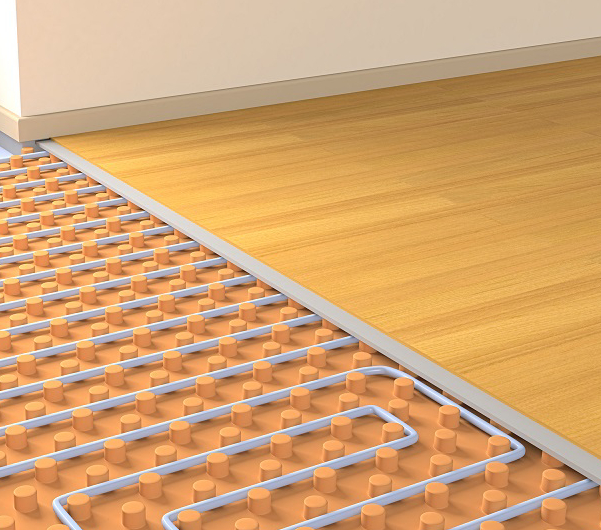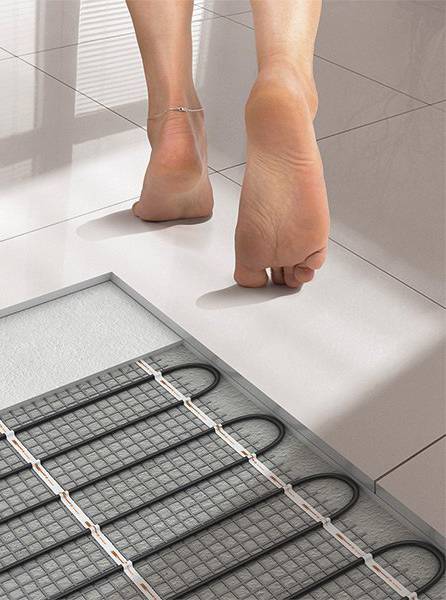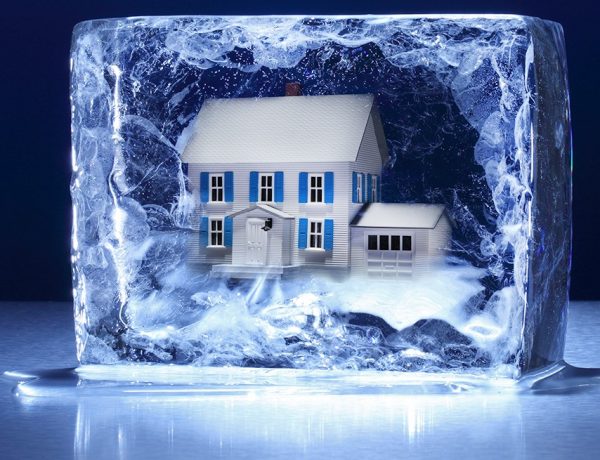Electric under floor heating systems provide many benefits for heating a home. They’re energy efficient, are built seamlessly into a home’s interior and give that added comfort of a nice warm feeling underfoot. They also assist the house. By keeping your floors warm, cold and damp will struggle to penetrate your floor system, and this can also help to reduce the chances of developing mould and other moisture issues.

Warm feet. Deters mould. What’s not to love?
From a design perspective, electric under floor heating is an attractive option because it’s built into the floor and this means that apart from a control panel/thermostat on the wall, the rest of the heating system is hidden from sight. This means no vents or fans or bulky heating units are visible to the eye.
So how does it work? There are a few different methods, but essentially electric under floor heating works by running electric resistance cables (radiant under floor heating), a continuous insulated wire (electric single wire installations), or cross-linked polyethylene tubing (hot water radiant systems) beneath your floor coverings; in the instance of the later two options listed above, this also requires the system to be imbedded in mortar, or in some instances, a thick ply sub-floor.

Radiant under floor heating
Whatever the option or installation requirements, the purpose is to create an even spread of heat through your floor that can be regulated and controlled. Spreading the heat evenly through your home increases the efficiency of your heating, and this is made even more efficient because there are no penetrations in an underfloor heating system through which drafts and cold air can blow.
The main drawbacks with electric under floor heating is that it can’t cool your home and depending on the type of system and product you go for, it can be expensive to install. It’s advisable to get a qualified installer to put in the system, and in many instances a licensed electrician will be required. In regards to the installation costs, these can be offset overtime from the money saved by running a more energy efficient heating system.

Hot water radiant systems can be $$$ to setup, as you can see why…
Maintenance costs and time are also typically low with under floor heating systems; there are very few moving parts, and the lack of vents and fans also means there is a less build up of dust and other allergens.
The range of different under floor heating systems means that they can be a good investment in new builds and retrofits alike. Though some options may not be possible due to the type of floor or slab system you have, there should still be multiple choices available to you for heating every room in your home if you desire to do so.




No Comments